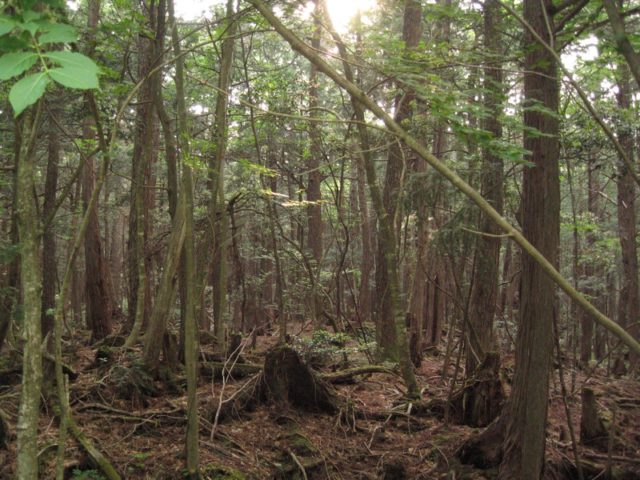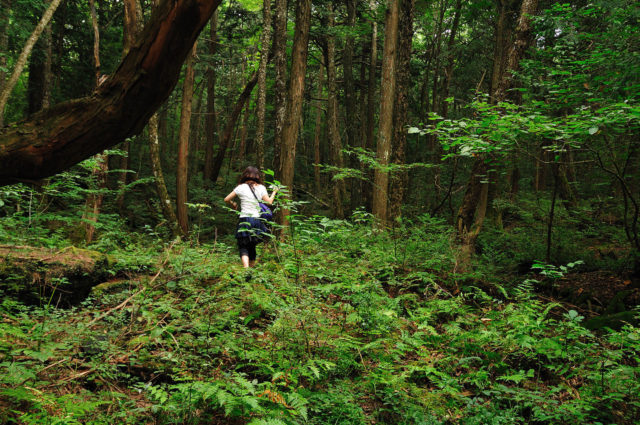Aokigahara populary known as the Suicide Forest or Sea of Trees , is a 35-square-kilometre (14 sq mi) forest that is located at the northwest base of Mount Fuji in Japan.
The forest contains a large number of rocky icy caverns, a few of which are popular tourist destinations. Aokigahara forest is very dense, shutting out all but the natural sounds of the forest itself.
The forest has a historic association with “yūrei” or angry ghosts of the dead in Japanese mythology, and it is a notoriously common suicide site (in which 54 took place in 2010). For this reason, a sign at the head of the main trail urges suicidal visitors to think of their families and contact a suicide prevention association.

The forest floor consists primarily of volcanic rock and is difficult to penetrate with hand tools such as picks or shovels. The forest itself is very dense, and one can get lost easily if leaving the official trails. Because of this, in recent years, hikers and tourists trekking through Aokigahara have begun to use plastic tape to mark their paths so as to avoid getting lost.
Past the designated trails leading to tourist attractions such as the Ice Cave and Wind Cave, the first kilometer of the forest is littered with tape and other rubbish left by tourists, despite officials’ attempts to remove it. After the first kilometer into Aokigahara towards Mount Fuji within the Fuji-Hakone-Izu National Park, the forest is in better condition, with little to no litter and few obvious signs of human presence.
The forest is reportedly the most popular site for suicide in Japan, and among the top three most popular sites for suicide in the world. Statistics vary, but there were around 30 suicides documented every year during the period leading up to 1988.
In 2003, 105 bodies were found in the forest, exceeding the previous record of 78 in 2002. In 2010, it was estimated that more than 200 people had attempted suicide in the forest, of whom 54 completed the act. Suicides are said to increase during March, the end of the fiscal year in Japan. As of 2011, the most common means of suicide in the forest were hanging or drug overdose. In recent years, local officials have stopped publicizing the numbers in an attempt to downplay Aokigahara’s association with suicide.

The high rate of suicide has led officials to place a sign at the forest’s entry, written in Japanese, urging suicidal visitors to seek help and not take their own lives. Annual body searches have been conducted by police, volunteers, and attendant journalists since 1970.
The site’s popularity has been attributed to Seichō Matsumoto’s 1960 novel Kuroi Jukai (Black Sea of Trees). However, the history of suicide in Aokigahara predates the novel’s publication, and the place has long been associated with death: ubasute may have been practiced there into the nineteenth century, and the forest is reputedly haunted by the yūrei (angry spirits) of those left to die.
